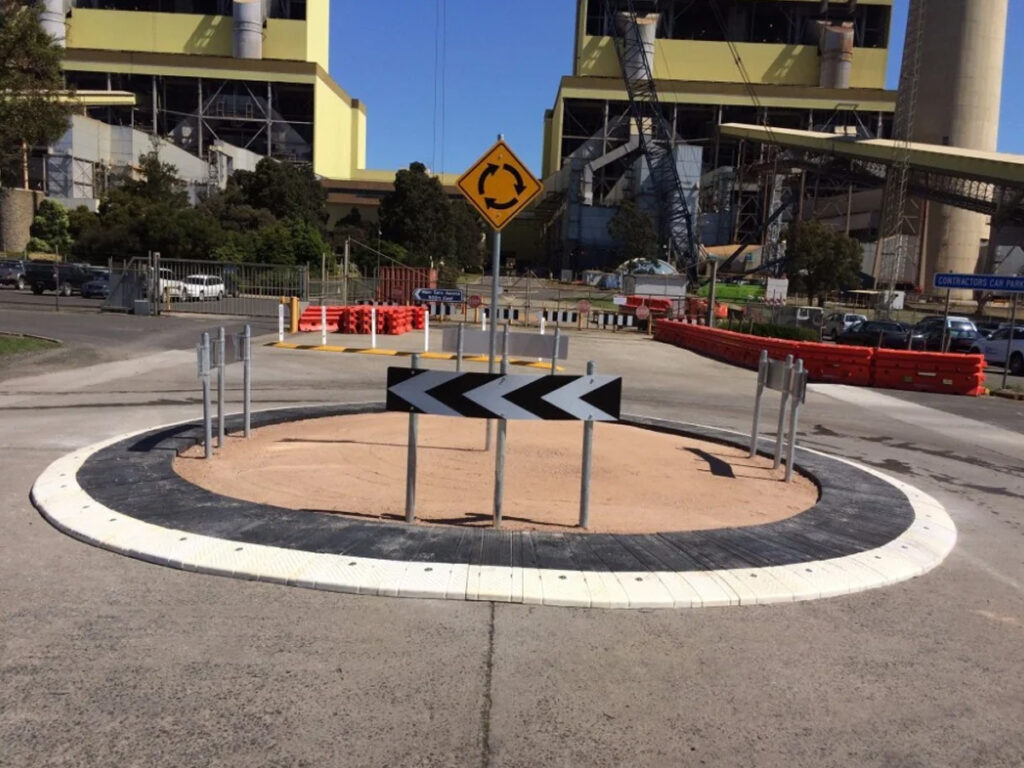When roads feel unsafe or too fast, councils often start with quick fixes, such as temporary speed humps or signs, to test how drivers respond. Long-term solutions, such as raised platforms or kerbing, are designed to last and shift driving habits more permanently. Choosing between these depends on the street, the goal, and the community response. Some areas need rapid action, while others benefit from lasting change.
This article explores both approaches. We’ll look at what works well in the short term and what holds up over time. By comparing both options, we aim to understand what truly helps improve safety. The focus is on making streets better for everyone who uses them.
When Temporary Works Best
Temporary traffic calming is great when councils need to test a new idea. Items like rubber cushions or movable chicanes can be installed fast and adjusted later.
These options help gather feedback from the local community. They also show whether a design works before investing in a complete rebuild. It is a low-risk way to improve safety.
Temporary tools also help during construction or events when standard traffic rules are in effect. In these moments, flexible calming helps manage sudden changes on the road.
- Rubber speed cushions are easy to place and move
- Temporary kerbing helps direct cars during short-term work
- Portable roundabouts slow traffic with little site impact
When Permanent Solutions Lead
Permanent traffic calming is built for long-term impact. This includes raised platforms, traffic islands, and strong kerbing that reshapes how drivers use the road.
Once installed, these tools do not wear out quickly. They become part of the street and change how people drive without needing reminders or adjustments.
They also enhance the appearance and ambience of a place. A permanent design often enhances the street’s appearance and fosters greater trust from residents and road users alike.
- Raised crosswalks protect people crossing near schools or shops
- Separation kerbing supports safe turns and clear paths
- Built-in traffic islands guide flow without stop signs
The Role of Trial Zones
Many councils test road changes before making them permanent. This allows them to monitor traffic, listen to locals, and make adjustments as needed. It also helps save money if a change does not work.
Temporary options are key in trial areas. They bring about rapid change without incurring heavy costs. But not all tests turn into long-term use, some need stronger tools to stay safe.
- Short-term tools give fast data on speed and flow
- Movable cushions help test different road points
- Pop-up kerbing creates safe turns while on trial
Long-Term Results and Safety
Permanent traffic calming often shows stronger results over time. Drivers get used to slower speeds and safer habits. This can lead to lasting change in the way people drive.
While temporary tools help in the moment, permanent designs are more complicated to ignore or forget. They become part of everyday driving and guide steady habits.
- Speed humps reduce fast driving by setting a lasting tone
- Chicanes make safe curves feel natural on any street
- Permanent roundabouts cut risky turns and fast exits
What Works Best in Practice?
The best choice depends on the goal. If fast action or testing is needed, temporary works well. But for lasting safety, permanent changes tend to bring better results.
Many places use both together. They start with one and shift to the other. The key is choosing what fits the road, the people, and the budget.
- Use temporary calming to test or handle short-term issues
- Choose permanent tools when the goal is long-term safety
- Combine both for a flexible and cost-smart plan
Conclusion
Traffic calming is not a one-size fix. Both temporary and permanent tools play a role in safer streets. It all depends on where they are used and what outcome is needed.
With help from tools like rubber cushions, raised platforms, and kerbing from Traffic Products Australia, streets can be made safer in innovative and simple ways. The real success lies in knowing when to test and when to commit.
Short-term changes give fast results and help find what works. Long-term ones build habits and improve how people move across the area. Both have value.
The answer is not one or the other, it is about balance. And that’s what keeps our roads safe for everyone.For more information on traffic calming, read this article.


